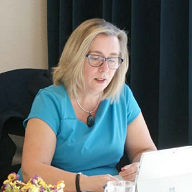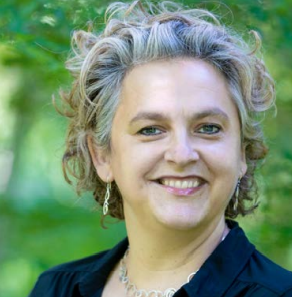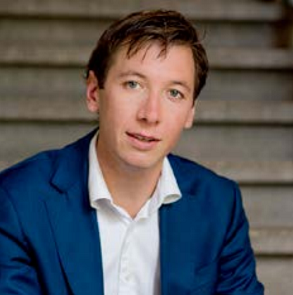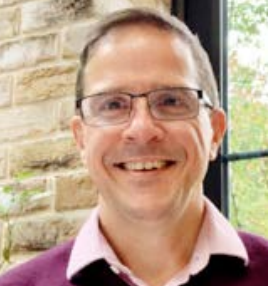HUB-IN Interviews: A focus on the Financing Models for Historic Urban Area (HUAs) projects
Novel opportunities emerge as the heritage regeneration financing landscape evolves. When looking at past and current projects, financing comes predominantly from classic public and private funding sources. Yet as we will discover that crowdfunding and community funding are increasingly becoming a part of the funding mix.
HUB-IN Places dare to experiment with new financial structures, combining traditional public funding streams with other (private) sources of funding. In creating novel financial structures, HUB-IN cities carefully balance potential shifts in the distribution of power and influence, contributing to their city’s inclusive and sustainable development.
Today’s Expert: Irma Langeraert from Ilfa & Anders Financieren

Irma Langeraert – Founder and director of Ilfa and Anders Financieren.
Ilfa provides experts in treasury and funding that tailor the financial strategy for various organisations.
Anders Financieren – A Dutch societal funding plateform that focuses on raising large amounts for societal projects at a relatively low risk-profile.
The Bernhoven hospital in the Netherlands is on a journey to become a ‘community hospital.’ About ten percent of the 8 million euro collected came from employees, the other 90 percent came from people living in the region including professional investors. To give all employees a chance at joining, 100 euro worth of bonds are given to all employees each year. This combination of community and crowdfunding is enabled by Anders Financieren, a Dutch societal funding platform. It focuses on raising large amounts for societal projects at a relatively low risk-profile. The platform facilitates bonds starting at 500 euro.
What is the value of including employees and the regional community in financing a hospital?
When we organise meetings people openly accept a lower interest, because they have the interest of keeping a local hospital running. They want to be part of the community that makes this possible. The interest is a good extra, but elsewhere there would be more profit. There is an option for investors to donate the interest.
How important is ownership of the real estate for the business model?
It’s frustrating to see how more and more health institutes are forced into renting instead of owning the real estate they use. If real estate is a part of your core business and you are dependent on landlords that only worry about their own profits, then it can hollow out the business model over time. Until finally it becomes impossible to finance anything. What we do in healthcare is also applicable for heritage.
Why is community financing suitable in other areas such as urban heritage regeneration?
Crowdfunding is vintage. It was invented hundreds of years ago not long before the first stock exchange opened in Amsterdam in the 17th century. Up until a couple of decades ago it happened all the time. Bonds were offered locally to finance public value. Today there is mostly anonymity, people far away deciding where there will be a hospital. What we do feels new today but really is not.
Heritage related example: Boei, investing in heritage regeneration.
- SEO Powered Content & PR Distribution. Get Amplified Today.
- Platoblockchain. Web3 Metaverse Intelligence. Knowledge Amplified. Access Here.
- Source: https://www.crowdfundinghub.eu/hub-in-interview-talking-community-impact-investing/?utm_source=rss&utm_medium=rss&utm_campaign=hub-in-interview-talking-community-impact-investing
- a
- About
- Accept
- All
- amounts
- amsterdam
- and
- Anonymity
- applicable
- AREA
- areas
- Balance
- because
- become
- becomes
- becoming
- before
- Bonds
- business
- business model
- carefully
- Century
- Chance
- Cities
- classic
- combination
- combining
- community
- contributing
- Core
- Couple
- Crowdfunding
- Current
- decades
- Deciding
- dependent
- Development
- Director
- discover
- distribution
- donate
- Dutch
- each
- elsewhere
- employees
- estate
- Ether (ETH)
- Euro
- example
- exchange
- experiment
- expert
- experts
- extra
- facilitates
- Finally
- finance
- financial
- financing
- First
- Focus
- focuses
- For Investors
- founder
- from
- frustrating
- funding
- Give
- given
- good
- happened
- Health
- healthcare
- heritage
- historic
- How
- HTTPS
- Hundreds
- Impact
- important
- impossible
- in
- In other
- Including
- Inclusive
- increasingly
- influence
- instead
- interest
- Interview
- Interviews
- Invented
- investing
- Investors
- IT
- joining
- journey
- keeping
- landscape
- large
- living
- local
- locally
- Long
- looking
- Low
- MAKES
- max-width
- meetings
- million
- model
- models
- more
- Netherlands
- New
- novel
- offered
- opened
- opportunities
- Option
- Organisations
- Other
- own
- ownership
- part
- past
- People
- percent
- Places
- platform
- plato
- Plato Data Intelligence
- PlatoData
- possible
- potential
- power
- predominantly
- private
- professional
- Profit
- profits
- projects
- public
- raising
- real
- real estate
- regional
- related
- relatively
- running
- Shifts
- societal
- Sources
- Starting
- stock
- Stock Exchange
- Strategy
- streams
- such
- suitable
- sustainable
- talking
- ten
- The
- the Netherlands
- their
- time
- to
- today
- traditional
- treasury
- urban
- use
- value
- various
- What
- will
- worth
- would
- years
- Your
- zephyrnet





